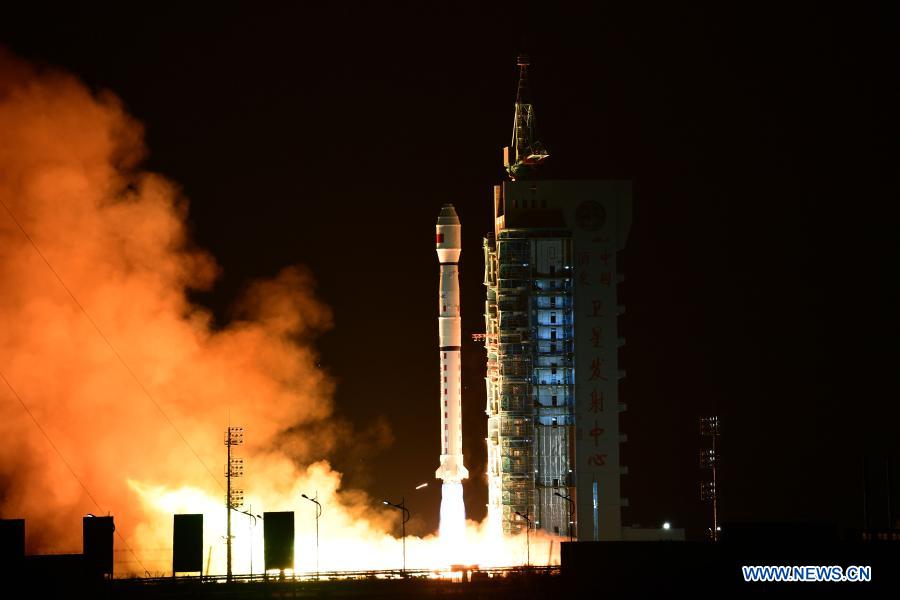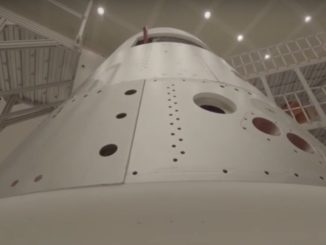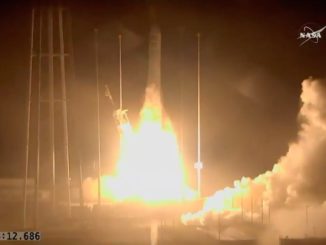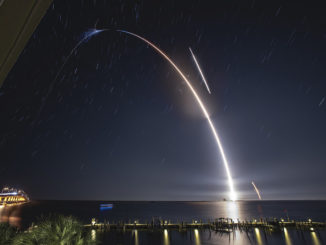
A secret Chinese military payload, believed to be a surveillance satellite, successfully flew into space Sunday aboard a Long March 4C rocket on China’s 39th and final scheduled orbital launch attempt of the year.
The military satellite and a smaller secondary payload lifted off from the Jiuquan space center in northwestern China’s Inner Mongolia region at 10:44 a.m. EST (1544 GMT) Sunday, according to the China Aerospace Science and Technology Corp., or CASC, the top state-owned contractor for the Chinese space program.
A three-stage Long March 4C rocket delivered the two payloads to their targeted orbit, Chinese officials said. U.S. military tracking data indicated the launcher reached an orbit around 425 miles (685 kilometers) in altitude, with an inclination of 98.3 degrees to the equator.
Chinese officials identified the primary payload on the Long March 4C rocket as Yaogan 33, and official statements from Chinese state media and CASC said Yaogan 33 will carry out a “remote sensing” mission.
The Yaogan series of spacecraft include satellites carrying Earth-facing optical telescopes and radar imagers to collect high-resolution imagery for the Chinese military and intelligence agencies.
Independent analysts believe Yaogan 33 might carry a radar reconnaissance imager designed to obtain all-weather, day-and-night imagery of strategic targets around the world.
Yaogan 33 was also the name of a military remote sensing satellite lost in a Long March 4C launch failure in May 2019, prompting speculation that the new Yaogan 33 satellite might be a replacement. However, the new Yaogan 33 satellite launched into a slightly different orbit than the one targeted on the the original ill-fated Yaogan 33 mission in 2019, causing some analysts to question whether the new spacecraft might be the first of a new type of Chinese military surveillance payload.
The name of the previous Yaogan 33 mission was not mentioned in Chinese media reports.
The first Yaogan 33 mission launched from the Taiyuan spaceport in northern China. Chinese officials said the launch of the new Yaogan 33 satellite was moved to Jiuquan to prevent spent stages from the Long March 4C rocket from falling on other countries.
The Long March 4C rocket Sunday also deployed a small technology experiment satellite.
The launch Sunday was likely the final Chinese space mission of 2020. There are no other Long March rockets with publicly-available launch dates before the end of the year.
With Sunday’s flight, China successfully launched 35 space missions into orbit this year in 39 attempts. U.S. companies performed 44 orbital launch attempts, with 40 successes, including flights by California-headquartered Rocket Lab from its private launch base in New Zealand.
The 39 orbital launch attempts ties a record level of Chinese launch activity set in 2018, but China achieved more successful space launches that year.
The four Chinese launch failures this year included a mishap during the debut launch of the Long March 7A rocket in March, a Long March 3B failure in April with the Indonesian Palapa N1 communications satellite, and problems during launches of China’s light-class Kuaizhou 11 and Kuaizhou 1A rockets in July and September.
Major successes for China’s space program in 2020 included launches of the Tianwen 1 rover toward Mars in July, and the launch, landing, and return of the Chang’e 5 lunar sample collection mission in December.
Email the author.
Follow Stephen Clark on Twitter: @StephenClark1.



